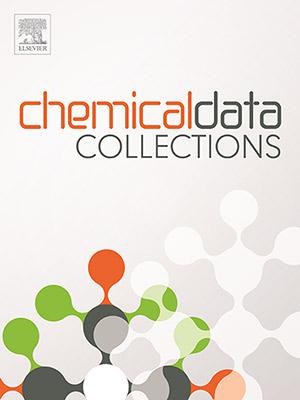潜在抗菌药物磺胺-咪唑衍生物的合成与分子对接
IF 2.7
Q2 Chemistry
引用次数: 0
摘要
合理设计合成了一系列新的磺胺-咪唑杂化衍生物(12a-12l),并对革兰氏阳性菌、枯草芽孢杆菌和金黄色葡萄球菌进行了抑菌活性评价。以链霉素为对照药,采用肉汤微量稀释法评价其抑菌潜力。在所合成的化合物中,12a、12c、12d、12f和12h表现出显著的抑菌活性,抑菌范围为16-19 mm(枯草芽孢杆菌)和15-20 mm(金黄色葡萄球菌),MIC值为4.58 ~ 9.56µg/mL,与链霉素的MIC值(6.14 ~ 6.25µg/mL)相当。为了进一步了解它们的作用机制,我们对大肠杆菌K12 (PDB ID: 4XO8)的FimH凝集素结构域进行了分子对接研究。化合物12a和12b表现出很强的结合亲和力(分别为- 7.92和- 7.18 kcal/mol),与活性位点残基形成关键氢键,验证了设计原理。构效关系(SAR)分析表明,磺酰胺环上的吸电子取代基和空间优势取代基增强了抗菌效力。此外,在计算机ADME和毒性预测显示,大多数化合物具有良好的药物相似性,除了12l,它显示潜在的生殖毒性。这些发现强调了磺胺-咪唑杂交物,特别是12a, 12c, 12d, 12f和12h,作为针对耐药革兰氏阳性病原体的抗菌剂,有希望进一步优化。本文章由计算机程序翻译,如有差异,请以英文原文为准。
Synthesis and molecular docking of sulphonamide-imidazole derivatives as potential antibacterial agents
A novel series of sulphonamide–imidazole hybrid derivatives (12a–12l) was rationally designed, synthesized, and evaluated for antibacterial activity against Gram-positive bacteria, Bacillus subtilis and Staphylococcus aureus. The antibacterial potential was assessed using the broth microdilution method, with streptomycin serving as the reference drug. Among the synthesized compounds, 12a, 12c, 12d, 12f, and 12h demonstrated notable antibacterial activity, exhibiting inhibition zones of 16–19 mm (B. subtilis) and 15–20 mm (S. aureus), with MIC values ranging from 4.58 to 9.56 µg/mL, comparable to that of streptomycin (6.14–6.25 µg/mL). To further understand their mechanism of action, molecular docking studies were conducted against the FimH lectin domain of Escherichia coli K12 (PDB ID: 4XO8). Compounds 12a and 12b displayed strong binding affinities (−7.92 and −7.18 kcal/mol, respectively), forming key hydrogen bonds with active site residues, validating the design rationale. Structure–activity relationship (SAR) analysis indicated that electron-withdrawing and sterically favorable substituents on the sulphonamide ring enhance antibacterial potency. Additionally, in silico ADME and toxicity predictions revealed that most compounds exhibited favorable drug-likeness, with the exception of 12l, which showed potential reproductive toxicity. These findings highlight the sulphonamide–imidazole hybrids—particularly 12a, 12c, 12d, 12f, and 12h—as promising leads for further optimization as antibacterial agents targeting resistant Gram-positive pathogens.
求助全文
通过发布文献求助,成功后即可免费获取论文全文。
去求助
来源期刊

Chemical Data Collections
Chemistry-Chemistry (all)
CiteScore
6.10
自引率
0.00%
发文量
169
审稿时长
24 days
期刊介绍:
Chemical Data Collections (CDC) provides a publication outlet for the increasing need to make research material and data easy to share and re-use. Publication of research data with CDC will allow scientists to: -Make their data easy to find and access -Benefit from the fast publication process -Contribute to proper data citation and attribution -Publish their intermediate and null/negative results -Receive recognition for the work that does not fit traditional article format. The research data will be published as ''data articles'' that support fast and easy submission and quick peer-review processes. Data articles introduced by CDC are short self-contained publications about research materials and data. They must provide the scientific context of the described work and contain the following elements: a title, list of authors (plus affiliations), abstract, keywords, graphical abstract, metadata table, main text and at least three references. The journal welcomes submissions focusing on (but not limited to) the following categories of research output: spectral data, syntheses, crystallographic data, computational simulations, molecular dynamics and models, physicochemical data, etc.
 求助内容:
求助内容: 应助结果提醒方式:
应助结果提醒方式:


